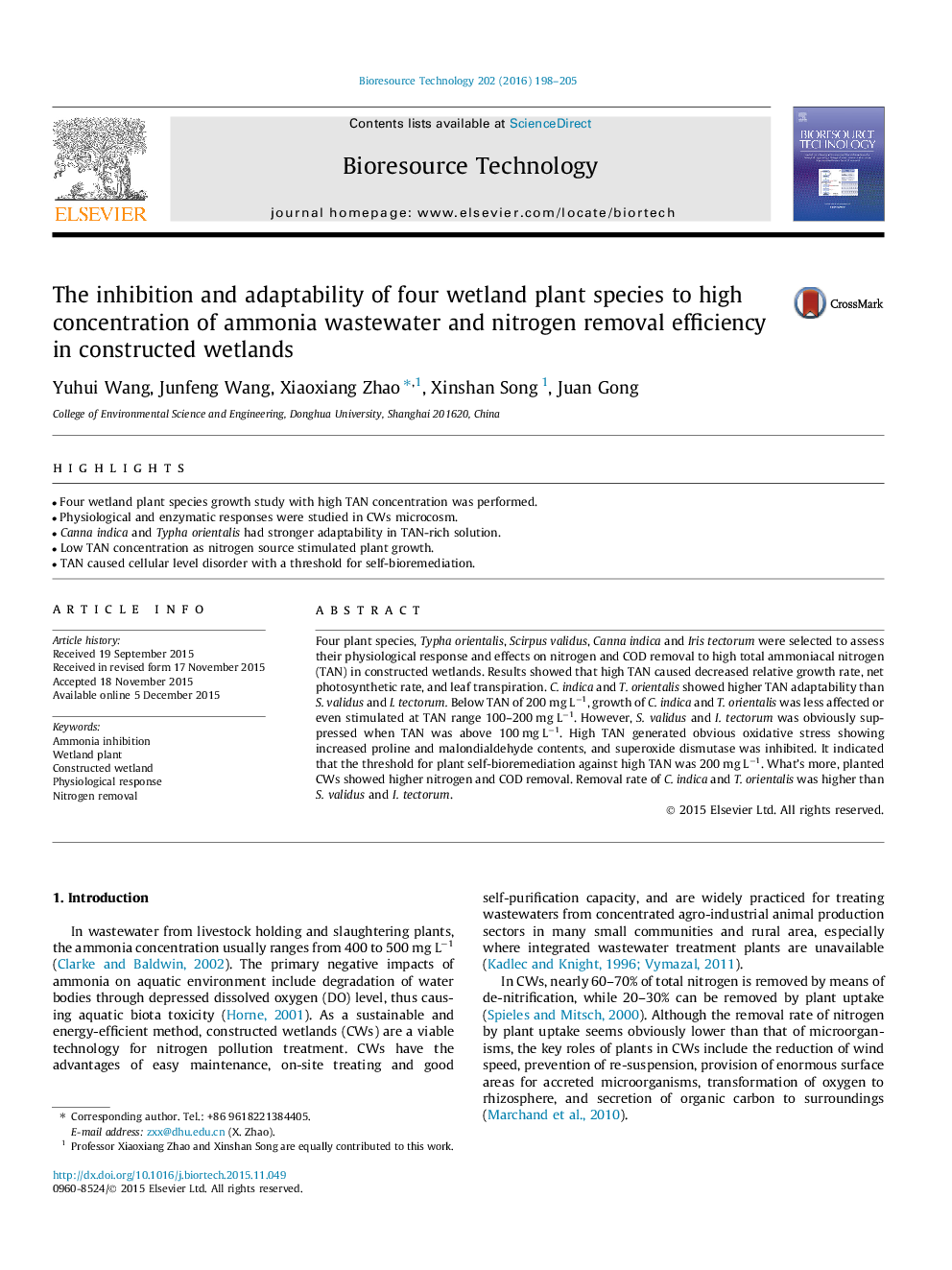| Article ID | Journal | Published Year | Pages | File Type |
|---|---|---|---|---|
| 679303 | Bioresource Technology | 2016 | 8 Pages |
•Four wetland plant species growth study with high TAN concentration was performed.•Physiological and enzymatic responses were studied in CWs microcosm.•Canna indica and Typha orientalis had stronger adaptability in TAN-rich solution.•Low TAN concentration as nitrogen source stimulated plant growth.•TAN caused cellular level disorder with a threshold for self-bioremediation.
Four plant species, Typha orientalis, Scirpus validus, Canna indica and Iris tectorum were selected to assess their physiological response and effects on nitrogen and COD removal to high total ammoniacal nitrogen (TAN) in constructed wetlands. Results showed that high TAN caused decreased relative growth rate, net photosynthetic rate, and leaf transpiration. C. indica and T. orientalis showed higher TAN adaptability than S. validus and I. tectorum. Below TAN of 200 mg L−1, growth of C. indica and T. orientalis was less affected or even stimulated at TAN range 100–200 mg L−1. However, S. validus and I. tectorum was obviously suppressed when TAN was above 100 mg L−1. High TAN generated obvious oxidative stress showing increased proline and malondialdehyde contents, and superoxide dismutase was inhibited. It indicated that the threshold for plant self-bioremediation against high TAN was 200 mg L−1. What’s more, planted CWs showed higher nitrogen and COD removal. Removal rate of C. indica and T. orientalis was higher than S. validus and I. tectorum.
